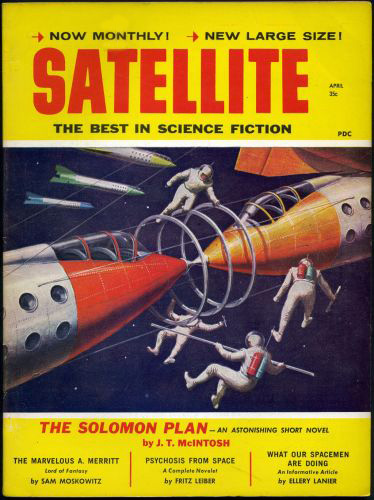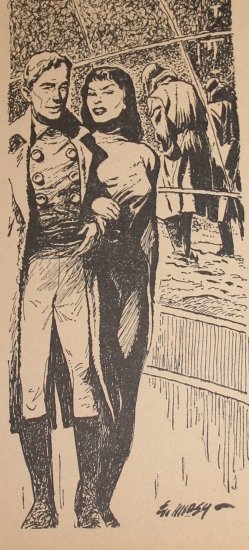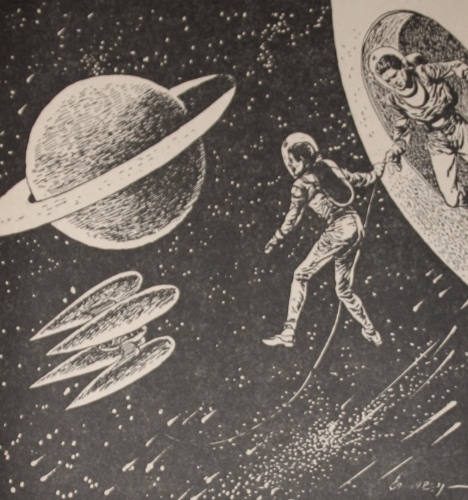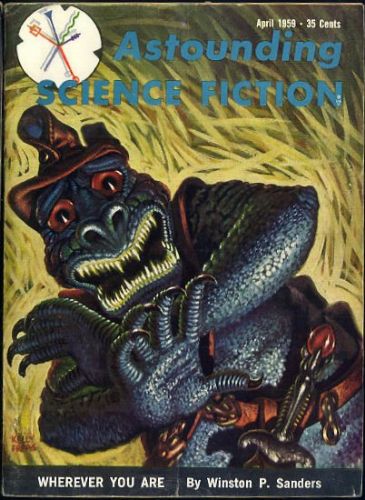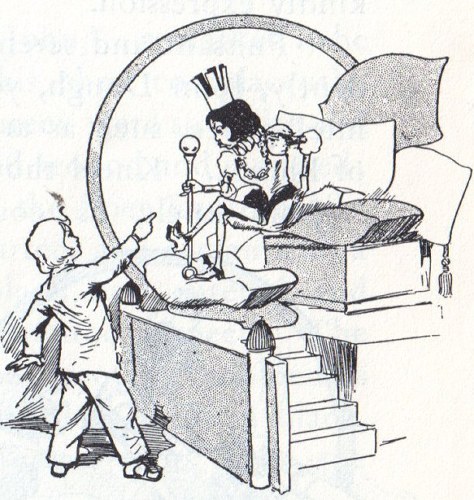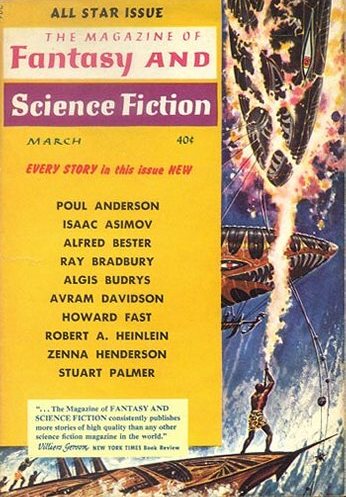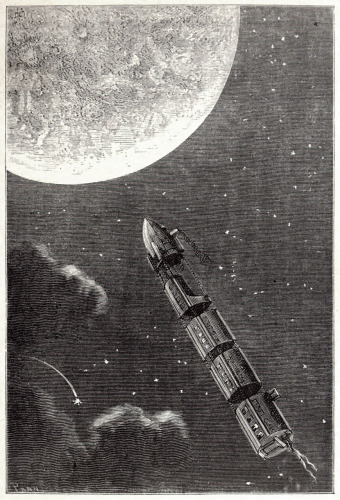
Hello, again, dear readers.
As you know, I had planned to write an article for this column yesterday, but I was unable to do so because I'd misplaced my wrist braces. Manual typewriters have very stiff keys, and composition is difficult without braces (shall I take up a collection for a lovely electric?)
Adversity always proves to be advantage, however. I took the opportunity to catch a double feature at the local dive cinema where last autumn's The Blob is still playing along with I Married a Monster from Outer Space. I must say, I got my eight bits worth!

This led me to believe radiation might be involved. It wasn't.
I'll talk about the latter film later–right now, I want to talk about The Killer Jello-Mold!…er… The Blob. The film starts on an odd note for a sci-fi/horror–with a catchy tune by "The Five Blobs," which I note has gotten a lot of airplay lately. It was a smart move; while the movie is not awful, where it falters, it can be excused because you were all ready for something camp.
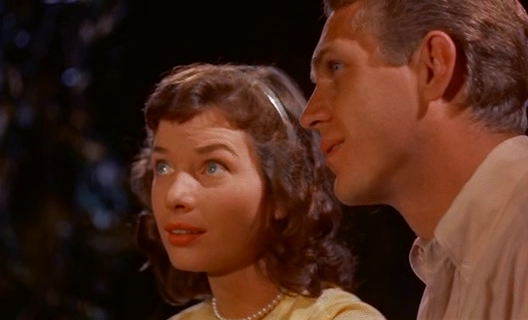
Our heroes.
Meet Steve Andrews and Jane Martin, a pair of…ahem… teenagers who, while making out on Lover's Lane, spot a falling star. But this is no ordinary meteor. It is, in fact, an egg. Prodded by an old farmer, it hatches a little translucent blob that adheres to the man's hand and begins to digest it. Panicked, the farmer runs across our two heroes, who obligingly take him to the town doctor.
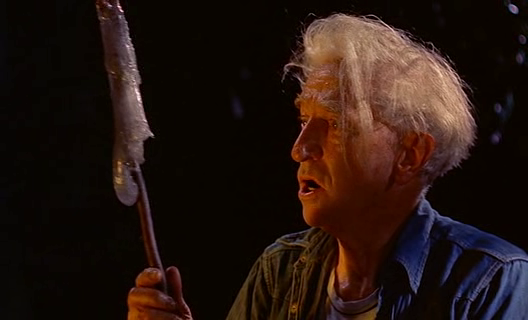
Don't touch that!
This is one of the more unsettling bits, watching the parasite eat the hapless old man alive. After the teens leave to check out the spot where the meteorite landed, the doctor and his nurse are eaten. Steve returns to the doctor's house just in time to see the doc digested.

Nurse Kate's brave assault was to no avail.
Most of the rest of the movie is devoted to Steve and Jane's attempts to warn the police and, when this is not immediately fruitful, the town as a whole, of the danger.
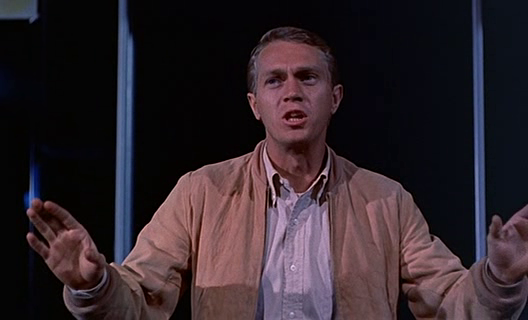
Listen to him! He knows!
Their efforts prove to be rather superfluous. The blob, increasingly red with the blood of its victims, and ever expanding in size with each meal, eventually becomes big enough to be unignorable (though, I was pleased to note, the blob did not seem to violate the 2nd Law of Thermodynamics; it merely assimilated its food with remarkable efficiency). It eats 50 movie-goers at the cinema and then turns its gooey pseudopods on our heroes, who become trapped under its now-enormous bulk in a diner.
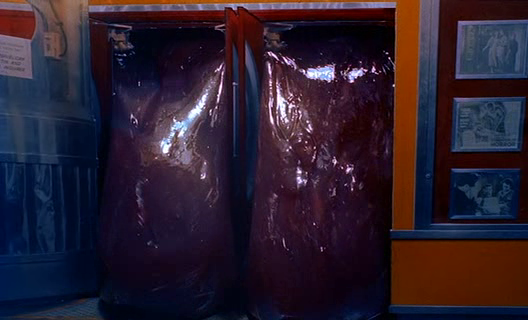
Oozing out of the theater and looking surprisingly tasty.
As had been hinted at earlier, the blob hates cold. It is ultimately subdued, but not destroyed, by an onslaught of fire extinguishers. The Air Force then airlifts the beast to the Arctic, where I'm sure we'll never hear from it again…

Dig this Carbon Dioxide! Blob, schmlob!
Sounds pretty dumb, right? Well, sure. But there's also a lot to like. For one, the movie is aware that a pile of tinted gelatin is not a particularly scary sight. You don't see the blob very much. It's just this menacing presence that you know is eating people right and left just off camera. There is real tension in the film, though the pacing is a bit strange. There are lots of long, pointless scenes that are fun in a character sense, but have little to do with the plot. Life is like that, though.
I particularly liked the character of Lt. Dave, the head policeman. No matter how fanastic Steve's story is, and despite the chidings of his police sergeant, Dave gives Steve respect and credence. If there's any subtext to the movie, it's that kids aren't all bad, despite what you've seen at the pictures lately.
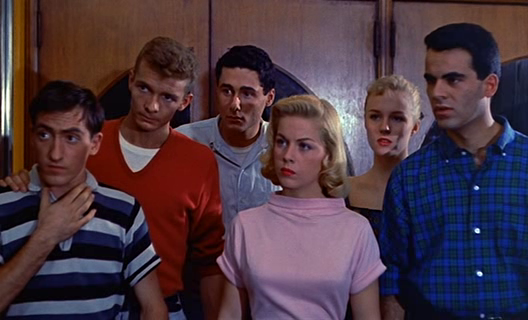
Kids ain't so bad. Especially ones in their late 20s!
I also thought it a nice touch when Jane's father, a prim, socially conscious school principal, reluctantly but with grim determination, smashes the door to his school to retrieve a score of fire extinguishers. Desperate times call for desperate measures.
The acting is no great shakes, though I thought Steve McQueen (Steve Andrews) did a decent job. I don't know if this film will make or break him, but I wouldn't mind seeing him lead in future movies.
The film was shot in some kind of widescreen Technicolor, and it's very pretty. Black and White is increasingly a thing of the past, and I'm enjoying the transition.
Now, I know I have a reputation for being a Fantasy & Science Fiction snob, but The Blob is worth a look. It is genuinely suspenseful and interesting. Moreover, it leaves room for speculation. What is the blob? Is it a weapon? A planetary sterilizer? It has some interesting traits. It doesn't like to break into smaller units (which would have made it truly unbeatable) though it will partially disassemble to get through grates and windows. It only eats living creatures, and we only ever see it attack people. That kind of menace seems a bit too tailored to be an accident. I bet it heralds an alien invasion.
Or how's this for a wild thought–what if the blob doesn't kill its prey but merely assimilates them into a collective? Maybe the blob is a peaceful being trying to unite all of humanity into a red, gelatinous mass. And now all those poor souls are trapped in a frozen ball at the North Pole. Brrrr…
Maybe I'm just thinking too much. You be the judge!
See you tomorrow…
(Confused? Click here for an explanation as to what's really going on)
This entry was originally posted at Dreamwidth, where it has  comments. Please comment here or there.
comments. Please comment here or there.
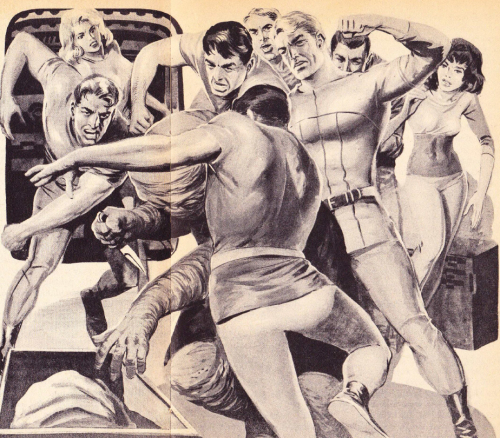
comments. Please comment here or there.



